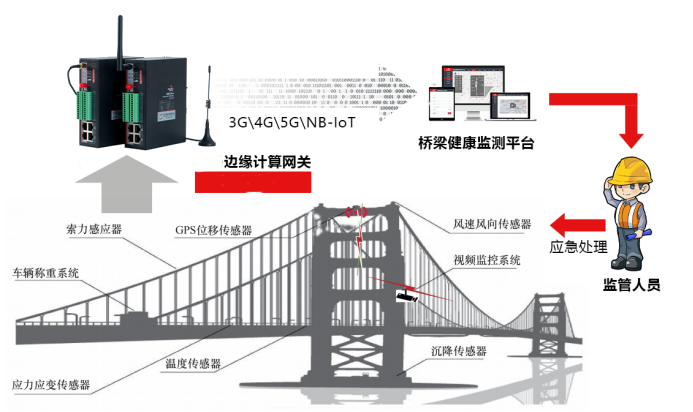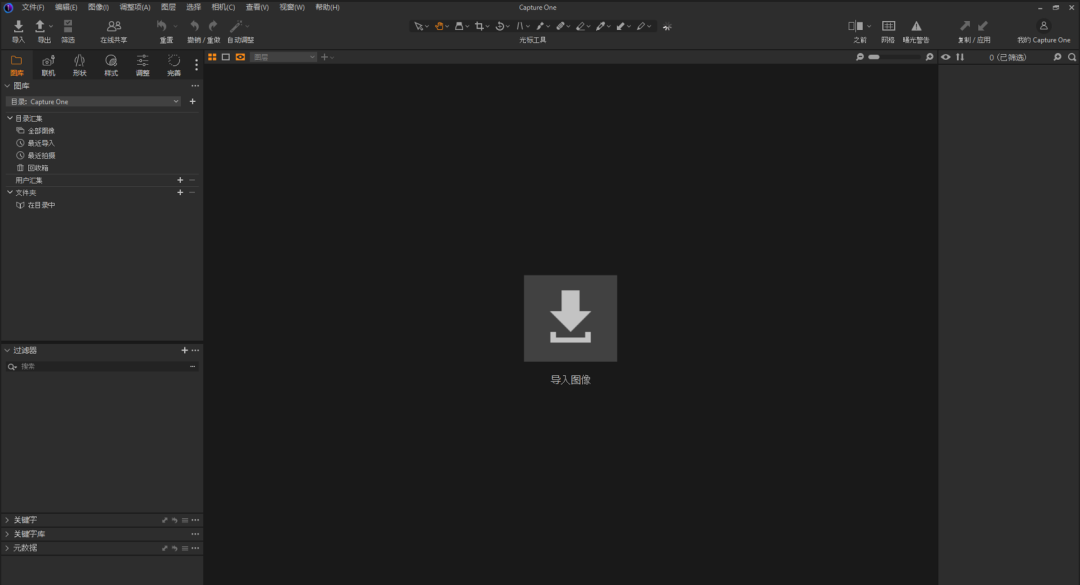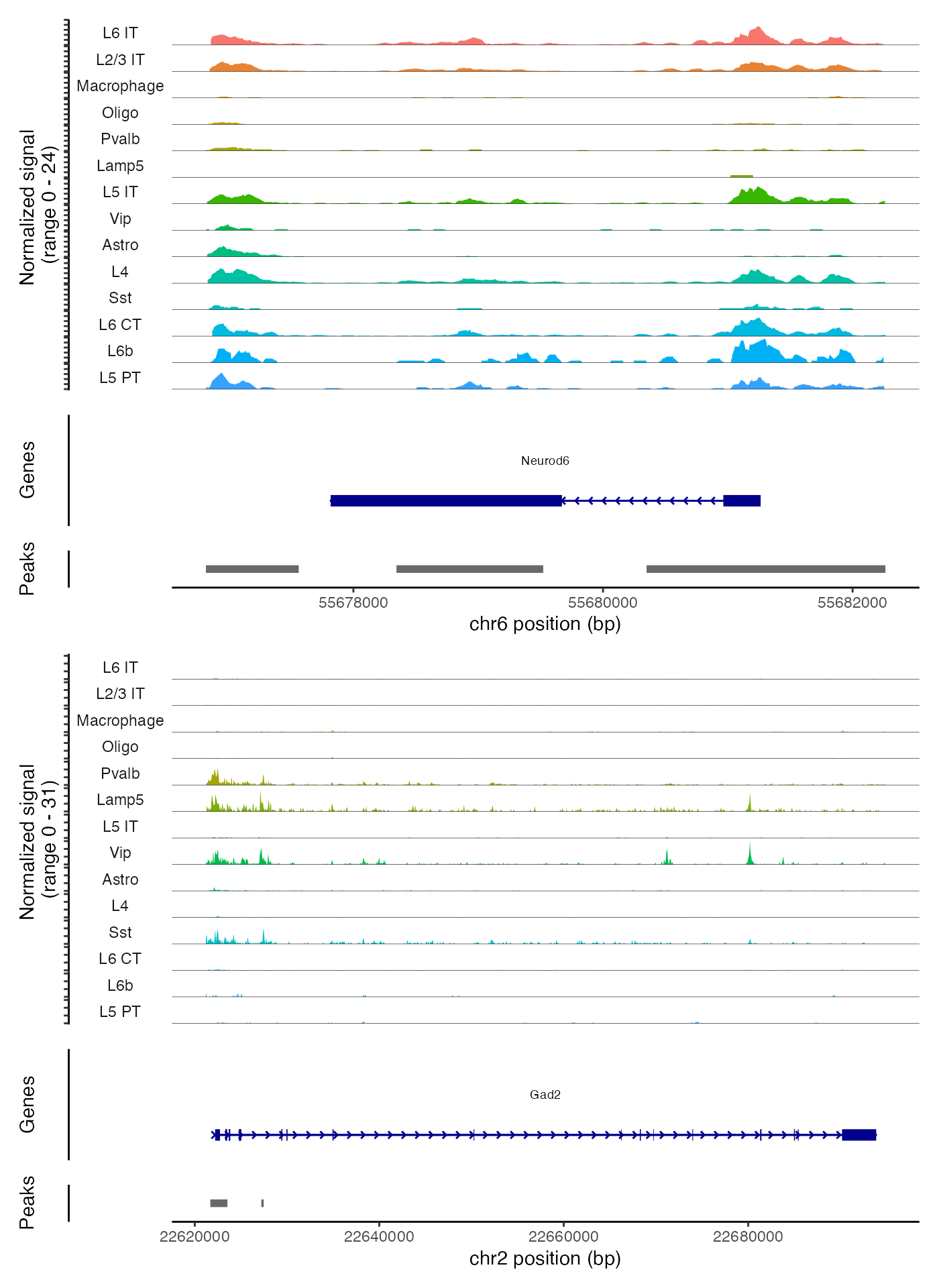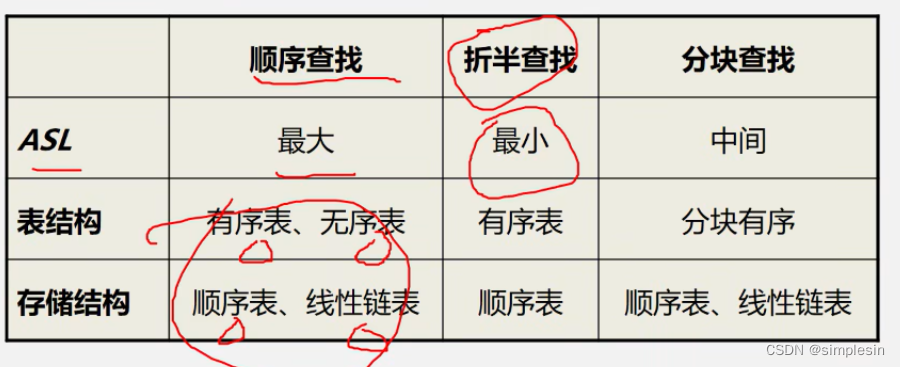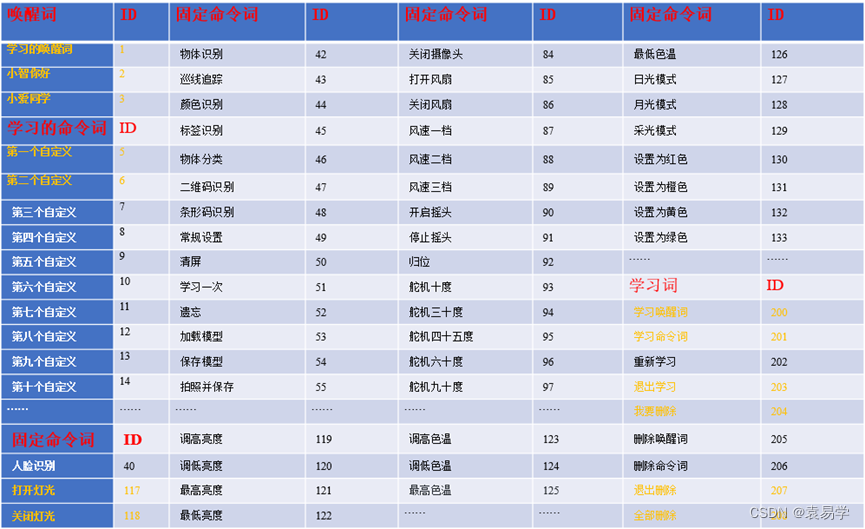剑指offer
文章目录
- 剑指offer
- 数组
- [数组中重复的数据 ](https://leetcode.cn/problems/find-all-duplicates-in-an-array/description/)
- 将元素交换到对应的位置
- 二维数组中的查找
- 二叉搜索树
- 旋转数组的最小数字
- 二分查找
- 数组中出现次数超过一半的数字
- 相互抵消
- 连续子数组的最大和(二)
- 动态规划
- 链表
- 从尾到头打印链表
- 栈
- 反转链表(双指针、递归)
- 拓展:反转链表中间一部分
- 删除链表的节点
- 链表合并
- 链表中倒数最后k个结点
- 双指针思想
- 复杂链表的复制
- 哈希表
- 在每个旧节点后加上新节点
- 删除有序链表中重复的元素-I
- 双指针思想
- 删除链表中重复的结点
- 二叉树
- 二叉树的深度
- 递归
- 二叉树的最小深度
- 二叉树的镜像
- 队列、栈
- 用两个栈实现队列
- 动态规划
- 跳台阶
- DP(ACM模式)
- 递归(ACM模式)
数组
数组中重复的数据
将元素交换到对应的位置
class Solution {
public:
vector<int> findDuplicates(vector<int>& nums) {
vector<int> result;
for (int i = 0; i<nums.size();i++)
{
while (nums[i] != nums[nums[i]-1])
{
swap(nums[i],nums[nums[i]-1]);
}
}
for (int i = 0; i<nums.size();i++)
{
if (nums[i]-1 != i)
{
result.push_back(nums[i]);
}
}
return result;
}
};
时间复杂度O(n)
空间复杂度O(1)
二维数组中的查找
二叉搜索树
class Solution{
public:
bool Find(int target, vector<vector><int> arr){
if (arr.empty() || arr[0].empty()) return false;
int i = 0;//行
int j = arr.size()-1;//列
while (i<=arr.size()-1 && j>=0)
{
if (target == arr[i][j])
return true;
else if (tartget < arr[i][j])
--j;
else
++i;
}
return false;
}
}
类似于二叉搜索树:

旋转数组的最小数字
二分查找
最小值一定在右区域!
class Solution {
public:
/**
* 代码中的类名、方法名、参数名已经指定,请勿修改,直接返回方法规定的值即可
*
*
* @param nums int整型vector
* @return int整型
*/
int minNumberInRotateArray(vector<int>& nums) {
int left = 0, right = nums.size()-1;
int mid;
while (left<right)
{
mid = (left + right)/2;
if (nums[left]<nums[right])//left一定在左区域或最低点,right一定在右区域,左区域的数一定大于等于右区域的数
return nums[left];
if (nums[mid] > nums[right])//mid在左区域,最小的数字在mid右边
{
left = mid + 1;
}
else if (nums[mid] == nums[right])//mid在重复元素
{
--right;
}
else //mid在右区域, 最小数字要么是mid要么在mid左边
{
right = mid;
}
}
return nums[left];
}
};
数组中出现次数超过一半的数字
相互抵消
用不同数字相互抵消的方法,最后留下来的一定是超过一半的数字
int MoreThanHalfNum_Solution(vector<int>& numbers) {
// write code here
int num = numbers[0];
int count = 1;
for (int i = 1; i<numbers.size(); ++i)
{
if (count > 0)
{
if (numbers[i]==num)
{
++count;
}
else
{
--count;
}
}
else //count = 0
{
num = numbers[i];
count = 1;
}
}
return num;
}
};
1287. 有序数组中出现次数超过25%的元素
由于这题是升序,可以直接用步长判断,也可以用上题的步骤判断
连续子数组的最大和(二)
根据剑指offer自己想的,待优化:
int最大值INT_MAX,最小值INT_MIN
int的最小值可以写成0x8000000,最大值可以写成0x7FFFFFFF
class Solution {
public:
vector<int> FindGreatestSumOfSubArray(vector<int>& arr) {
// write code here
int result = 0x80000000;
vector<int> vresult;
vector<int> temp;
int sum = 0;
for (int i =0;i<arr.size();++i)
{
if (sum<0)//如果和为负数,那么前一个和一定是从那个元素开始算的最大和了
{
temp.clear();
temp.push_back(arr[i]);
sum=arr[i];
}
else
{
sum+=arr[i];
temp.push_back(arr[i]);
}
if (sum>=result)
{
result = sum;
vresult = temp;
}
}
return vresult;
}
};
动态规划
//只需要保存最大值时:
int res = nums[0];
for (int i = 1; i < nums.size(); i++) {
if (nums[i - 1] > 0) nums[i] += nums[i - 1];
if (nums[i] > res) res = nums[i];
}
return res;
//需要保存对应的子数组时:
求连续子数组的最大和(ACM模式)
#include <iostream>
#include <string>
#include <vector>
using namespace std;
int main() {
string str;
cin>>str;//输入是个字符串
int k =0;
vector<int> numbers;
while((k = str.find(',')) != str.npos){//注意输出的方法
string temp = str.substr(0, k);
numbers.push_back(stoi(temp));
str = str.substr(k + 1);
}
numbers.push_back(stoi(str));
int tempmax = 0;
int result = 0x80000000;
int sum = 0;
for (int i =0; i<numbers.size();++i)
{
if (sum<0)
{
sum=numbers[i];
}
else
{
sum+=numbers[i];
}
result = max(sum,result);
}
if (result<0)
{
result = 0;
}
printf("%d",result);
}
// 64 位输出请用 printf("%lld")
链表
从尾到头打印链表
栈
利用栈先入后出的特点,很好解决
class Solution {
public:
vector<int> printListFromTailToHead(ListNode* head) {
stack<int> stk;
vector<int> result;
int value = 0;
while (head!=nullptr)
{
stk.push(head->val);
head = head->next;
}
while (!stk.empty())
{
value = stk.top();
result.push_back(value);
stk.pop();
}
return result;
}
};
时间复杂度O(n)
空间复杂度O(n)
反转链表(双指针、递归)
双指针:
class Solution {
public:
vector<int> printListFromTailToHead(ListNode* head) {
ListNode* preNode = nullptr;
ListNode* curNode = head;
while(curNode!=nullptr)
{
ListNode* temp = curNode->next;
curNode->next = preNode;
preNode = curNode;
curNode = temp;
}
vector<int> result;
while(preNode!=nullptr)
{
result.push_back(preNode->val);
preNode = preNode->next;
}
return result;
}
};
时间复杂度O(n)
空间复杂度O(1)
递归:
class Solution {
public:
vector<int> printListFromTailToHead(ListNode* head) {
ListNode* newhead = ReverseList(head);
vector<int> result;
while (newhead!=nullptr)
{
result.push_back(newhead->val);
newhead = newhead->next;
}
return result;
}
ListNode* ReverseList(ListNode* head)
{
if (head==nullptr || head->next==nullptr)
{
return head;
}
ListNode* newhead = ReverseList(head->next);
head->next->next = head;
head->next = nullptr;
return newhead;
}
};
时间复杂度O(n)
空间复杂度O(n)
拓展:反转链表中间一部分
92. 反转链表 II - 力扣(LeetCode)
class Solution {
public:
ListNode* reverseBetween(ListNode* head, int left, int right) {
if (head->next==nullptr || left==right)
{
return head;
}
ListNode* dummyhead = new ListNode(0);
dummyhead->next = head;
ListNode* preleftEdge = dummyhead;
ListNode* leftEdge = head;
ListNode* rightEdge = head;
for(int i = 1; i<left;++i)
{
preleftEdge = preleftEdge->next;
leftEdge = preleftEdge->next;
}
for(int i = 1; i<right;++i)
{
rightEdge = rightEdge->next;
}
ListNode* nextrightEdge = rightEdge->next;
ListNode* leftNode = leftEdge;
ListNode* firstNode = leftNode;
ListNode* rightNode = leftNode->next;
while (rightNode!=nextrightEdge)
{
ListNode* temp = rightNode->next;
rightNode->next = leftNode;
leftNode = rightNode;
rightNode = temp;
}
preleftEdge->next = leftNode;
firstNode->next = nextrightEdge;
return dummyhead->next;
}
};
删除链表的节点
class Solution {
public:
/**
* 代码中的类名、方法名、参数名已经指定,请勿修改,直接返回方法规定的值即可
*
*
* @param head ListNode类
* @param val int整型
* @return ListNode类
*/
ListNode* deleteNode(ListNode* head, int val) {
// write code here
ListNode* dummyhead = new ListNode(0);
dummyhead->next = head;
ListNode* pre = dummyhead;
ListNode* cur = head;
while (cur!=nullptr)
{
if (cur->val==val)
{
pre->next = cur->next;
break;
}
else
{
cur = cur->next;
pre = pre->next;
}
}
return dummyhead->next;
}
};
还有一种不需要知道前驱结点就可以“删除”链表结点的方法,前提是不能删除最后一个结点:
class Solution {
public:
void deleteNode(ListNode* node) {
node->val = node->next->val;
node->next = node->next->next;
}
};
链表合并
ACM模式的话要注意输入输出,然后要注意cur指针的更新
#include <iostream>
using namespace std;
struct ListNode
{
int val;
ListNode* next;
ListNode(int val): val(val), next(nullptr){}
};
int main() {
int a;
ListNode* dummyhead = new ListNode(0);
ListNode* cur = dummyhead;
ListNode* dummyhead1 = new ListNode(0);
ListNode* cur1 = dummyhead1;
ListNode* dummyhead2 = new ListNode(0);
ListNode* cur2 = dummyhead2;
while(cin>>a)
{
ListNode* node = new ListNode(a);
cur1->next = node;
cur1 = cur1->next;
if(cin.get()=='\n')
{
break;
}
}
while(cin>>a)
{
ListNode* node = new ListNode(a);
cur2->next = node;
cur2 = cur2->next;
}
cur1 = dummyhead1->next;
cur2 = dummyhead2->next;
while (cur1!=nullptr && cur2!=nullptr)
{
if (cur1->val<=cur2->val)
{
cur->next = cur1;
cur1 = cur1->next;
}
else
{
cur->next = cur2;
cur2 = cur2->next;
}
cur = cur->next;
}
if (cur1==nullptr)
{
cur->next = cur2;
}
if (cur2==nullptr)
{
cur->next = cur1;
}
cur = dummyhead->next;
while (cur!=nullptr)
{
printf("%d ",cur->val);
cur = cur->next;
}
return 0;
}
// 64 位输出请用 printf("%lld")
链表中倒数最后k个结点
双指针思想
右指针指向左指针后k个元素,这样当右指针为最后一个节点后的元素时,左指针指向的就是所求元素
/**
* struct ListNode {
* int val;
* struct ListNode *next;
* ListNode(int x) : val(x), next(nullptr) {}
* };
*/
class Solution {
public:
/**
* 代码中的类名、方法名、参数名已经指定,请勿修改,直接返回方法规定的值即可
*
*
* @param pHead ListNode类
* @param k int整型
* @return ListNode类
*/
ListNode* FindKthToTail(ListNode* pHead, int k) {
// write code here
if (pHead==nullptr)
{
return nullptr;
}
ListNode* left = pHead;
ListNode* right = left;
for (int i =0; i<k;++i)
{
if(right==nullptr)
{
return nullptr;
}
right = right->next;
}
while (right!=nullptr)
{
right = right->next;
left = left->next;
}
return left;
}
};
复杂链表的复制
LCR 154. 复杂链表的复制 - 力扣(LeetCode)
哈希表
键为旧指针,值为新指针。第一次遍历时初始化键和值的label,第二次赋上next和random指针
class Solution {
public:
Node* copyRandomList(Node* head) {
if (head==nullptr)
{
return nullptr;
}
unordered_map<Node*,Node*> mp;
Node* cur = head;
while (cur!=nullptr)
{
Node* newNode = new Node(cur->val);
mp[cur] = newNode;
cur = cur->next;
}
cur = head;
while (cur!=nullptr)
{
mp[cur]->next = mp[cur->next];
mp[cur]->random = mp[cur->random];
cur = cur->next;
}
return mp[head];
}
};
在每个旧节点后加上新节点
最后要记得把旧链表头结点断开连接
class Solution {
public:
RandomListNode* Clone(RandomListNode* pHead) {
if (pHead==nullptr)
{
return nullptr;
}
//初始化next
RandomListNode* cur1 = pHead;
while (cur1!=nullptr)
{
RandomListNode* newNode = new RandomListNode(cur1->label);
newNode->next = cur1->next;
cur1->next = newNode;
cur1 = cur1->next->next;
}
//赋值random
cur1 = pHead;
RandomListNode* cur2 = pHead->next;
while (cur1!=nullptr)
{
if (cur1->random != nullptr)
{
cur2->random = cur1->random->next;
}
cur1 = cur1->next->next;
cur2 = cur2->next->next;
}
//拆分链表
RandomListNode* newCloneHead = pHead->next;
cur2 = newCloneHead;
pHead->next = nullptr;
while (cur2->next!=nullptr)
{
cur2->next = cur2->next->next;
cur2 = cur2->next;
}
cur2->next=nullptr;
cur1 = pHead;
cur2 = pHead->next;
return newCloneHead;
}
};
删除有序链表中重复的元素-I
双指针思想
ListNode* deleteDuplicates(ListNode* head) {
// write code here
if (head==nullptr)
{
return nullptr;
}
ListNode* dummyhead = new ListNode(0);
ListNode* left = dummyhead;
ListNode* right = head;
while(right!=nullptr)
{
while (right->next!=nullptr && right->val==right->next->val)
{
right = right->next;
}
left->next = right;
left = left->next;
right = right->next;
}
return dummyhead->next;
}
删除链表中重复的结点
比前面多了再将right右移一步的动作,以及最后要把left指向nullptr
class Solution {
public:
ListNode* deleteDuplication(ListNode* pHead) {
if (pHead==nullptr)
{
return nullptr;
}
ListNode* dummyhead = new ListNode(0);
ListNode* left = dummyhead;
ListNode* right = pHead;
while(right!=nullptr)
{
if(right->next!=nullptr && right->val==right->next->val)
{
while (right->next!=nullptr && right->val==right->next->val)
{
right = right->next;
}
right = right->next;
continue;
}
left->next = right;
left = left->next;
right = right->next;
}
left->next = nullptr;
return dummyhead->next;
}
};
二叉树
二叉树的深度
递归
返回左子树和右子树深度的最大值加上一(后序遍历)
class Solution {
public:
int TreeDepth(TreeNode* pRoot) {
if (pRoot==nullptr)
{
return 0;
}
return max(TreeDepth(pRoot->left),TreeDepth(pRoot->right))+1;
}
};
二叉树的最小深度
111. 二叉树的最小深度 - 力扣(LeetCode)
和二叉树的(最大)深度的区别是,计算的是到叶子节点(左右孩子都为空)的最小深度,也用后序遍历实现
class Solution {
public:
int minDepth(TreeNode* root) {
if (root==nullptr)
{
return 0;
}
if (root->left==nullptr && root->right!=nullptr)
{
return minDepth(root->right)+1;
}
else if (root->right==nullptr && root->left!=nullptr)
{
return minDepth(root->left)+1;
}
else
{
return min(minDepth(root->left),minDepth(root->right))+1;
}
}
};
二叉树的镜像
LCR 144. 翻转二叉树 - 力扣(LeetCode)
前序遍历
TreeNode* Mirror(TreeNode* pRoot) {
// write code here
if (pRoot==nullptr) return pRoot;
swap(pRoot->left,pRoot->right);
Mirror(pRoot->left);
Mirror(pRoot->right);
return pRoot;
}
后序遍历
TreeNode* Mirror(TreeNode* pRoot) {
// write code here
if (pRoot==nullptr) return pRoot;
Mirror(pRoot->left);
Mirror(pRoot->right);
swap(pRoot->left,pRoot->right);
return pRoot;
}
队列、栈
用两个栈实现队列
每当要pop的时候就获取stack2的最上面的元素,如果stack2为空,则将stack1依次出栈到stack2。这样stack2上面的就是最先push进去的元素,最底下是最新push进去的元素。
class Solution
{
public:
void push(int node) {
stack1.push(node);
}
int pop() {
while (!stack2.empty())
{
int result = stack2.top();
stack2.pop();
return result;
}
while (!stack1.empty())
{
int temp = stack1.top();
stack2.push(temp);
stack1.pop();
}
int result = stack2.top();
stack2.pop();
return result;
}
private:
stack<int> stack1;
stack<int> stack2;
};
动态规划
跳台阶
DP(ACM模式)
#include <iostream>
#include <unordered_map>
using namespace std;
int main() {
int a;
cin>>a;
unordered_map<int,int> dp;
dp[0] = 1;
dp[1] = 1;
dp[2] = 2;
if (a<=2)
{
printf("%d",dp[a]);
}
else {
for (int i=3;i<=a;i++)
{
int temp = dp[2];
dp[2] +=dp[1];
dp[1] = temp;
}
printf("%d",dp[2]);
}
return 0;
}
// 64 位输出请用 printf("%lld")
递归(ACM模式)
#include <iostream>
using namespace std;
int Jump(int num)
{
if (num==0) return 1;
if (num==1) return 1;
if (num==2) return 2;
return Jump(num-1) + Jump(num-2);
}
int main() {
int a;
cin>>a;
int result = Jump(a);
printf("%d",result);
return 0;
}
// 64 位输出请用 printf("%lld")


